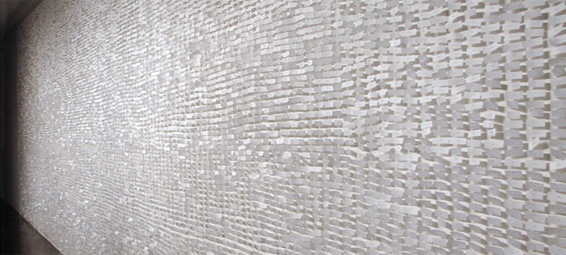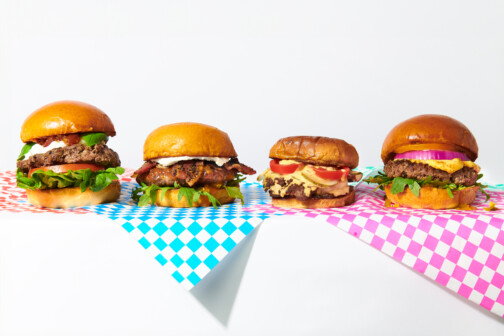A twelve- by thirty-foot wall of white shirt labels, arranged in a grid and each pinned about one inch above the wall’s surface, is the dramatic opening statement in “Joseph Havel: Plus or Minus.” The woven labels hang with a slight irregularity which registers in their shadows on the wall. Unless you look closely, you won’t see the white text that reads “nothing,” embroidered into the white surface of each label. This move is echoed in another set of works on view, the series Seven Variations of White Nothing (2007), which have “nothing” printed in white ink on white letter-sized parchment. Is this, or is it not, “nothing”? The puzzle of conceptual ambiguity is perhaps overwhelmed by the sensuous pleasure of the white-on-white surfaces. Although the conceptual issue, consideredby itself, might lead one to cite the names of Magritte and Kosuth for context, I think the material richness of these works’ surfaces actually leads to Glenn Ligon’s text works (coming to the Modern Art Museum of Fort Worth this month) as the most relevant comparison, even if Havel’s work does not press the socio-political hot buttons that Ligon’s does.
The main gallery is organized around six of Havel’s bronze sculptures (2011-12) from the series On History and Memory. They seem to leap and soar in the air above their bases (which are shaped like stacks of books) with an elegance somewhat at odds with their homely origins in torn strips of white dress shirts, the artist’s signature material.
Image at top: Joseph Havel, Nothing. (Pinned), 2010 – Woven Shirt labels and straight pins. Dimensions variable, as pictured, 144x480x1 inches. (Courtesy Talley Dunn)






